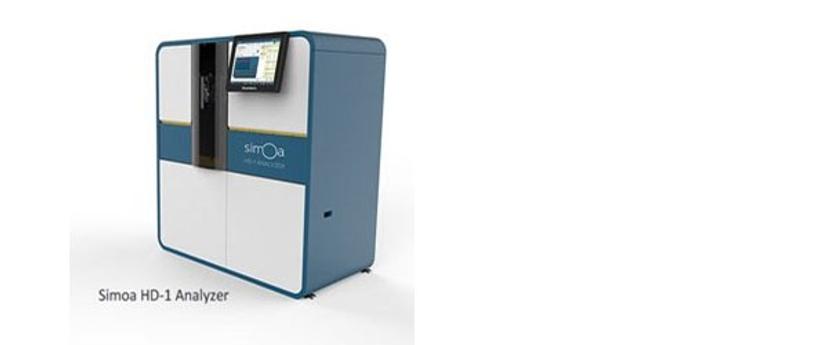Researchers at Merck Develop Innovative Therapeutics for HIV
Bonnie Howell, Executive Director at Merck, discusses the use of ultrasensitive Quanterix technology to develop novel therapies for HIV and shares her hopes for a future world, free of the disease
13 Feb 2018

Approximately 36.7 million people in the US were living with HIV at the end of 2015 and it is estimated that only 60% of those know their HIV status1. Merck began its clinical research into HIV in the mid-1980s and was among the first to develop medicines for its treatment. Bonnie Howell is the Executive Director in the department of infectious disease and vaccines at Merck. SelectScience® speaks to Howell to find out more about the use of ultrasensitive immunoassays in the development of HIV treatments.
Describe your current work on infectious diseases and the need for your current projects
BH: Part of my research is focused on HIV prevention, treatment and cure. We have a need to bring forward novel therapeutic approaches that will help address the disease, but we will also invest in novel biomarkers, assays and tools that will help to measure and characterize the HIV reservoir.
Where do you think we are right now with HIV in general, in terms of progress made?
BH: We have had tremendous success since the discovery of the virus in the early 1980s. For more than 30 years, companies like ours have been at the forefront of the fight against HIV & AIDS, bringing forward new therapies that do a tremendous job at suppressing the virus and controlling infection. This enables patients to go on and live reasonably healthy and normal lives, with a life expectancy that is relatively comparative to an uninfected individual. The next challenge is going to be to find a cure for HIV.

How likely is it that a cure will be found?
BH: Progress is being made in terms of early intervention strategies that are helping to increase our understanding of the biology, pertaining to the persistence of the
virus itself and where the virus may be hiding. New approaches are being explored that may offer some short-term respite from antiretroviral therapy. But there is more work to be done that allows either a functional cure – so an extended time off a therapy - or hopefully even eradication.
Utilizing advanced immunoassay technology
How does the Quanterix Simoa technology help you to achieve your research goals in HIV?
BH: As mentioned, investments in HIV treatments and cure research are going to depend largely on understanding and measuring the HIV reservoir. The Quanterix technology gives us the opportunity to provide accurate and sensitive quantitation of viral production in tissues and fluids.
The Simoa HD-1 platform is immunoassay-based and enables ultrasensitive detection of HIV proteins, certainly well beyond the sensitivity of contemporary assays. Identifying very low levels of protein from the low frequency cells is an important advancement because even small levels of HIV protein expression are likely to contribute to tissue inflammation and persistence of immune activation. This is also the target of some of the immune-based therapies being pursued for cure research. Having an ultrasensitive assay that can measure HIV protein at very low levels is helping to advance the field of HIV research.
What is the advantage this technology offers you over other immunoassay platforms?
BH: The Simoa HD-1 affords enhanced sensitivity in viral protein detection and the automated platform provides improved throughput to handle a larger number of samples. The technology is allowing us to better detect cells that harbor HIV provirus and are capable of producing viral protein. Before we had this technology, most of the methodology relied on nucleic acid-based measurements, which also detects defective proviruses unable to produce protein or virus, Now, we can measure low levels of viral protein directly which feeds into our understanding of the mechanisms of HIV persistence, immune activation and disease pathogenesis, as well as provides a tool to measure the HIV reservoir. Collectively, it will enable us to better assess the efficacy of our therapeutic approaches.

How do you think your research will affect patient care and infectious diseases management going forward?
BH: Merck has been committed to HIV research for over 30 years. We have the shared vision of making a difference in the lives of people globally and delivering on the mission of bringing forward novel tools and novel therapies that are going to improve the lives of people around the world. The Simoa technology is a great example of a tool that is being leveraged to allow us to better understand the biology that helps shape how we assess the disease, and how we develop innovative products to improve lives.
The future is to keep moving forward. Thirty years ago, this virus was impacting so many patients and causing significant loss of life; we have now been able to find an effective therapy to treat patients. Now the next step is to develop innovative medicines that hopefully will lead to a cure for the individuals who are impacted by the virus and the disease. As technology and science evolve, we will see further advances in HIV cure approaches.
Article based on an interview with Bonnie Howell at the Powering Precision Health Summit 2017 (PPHS 2017), MA, USA, October 24-25, 2017.
References:
1. Merck: Our Work in HIV
